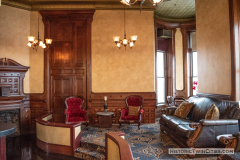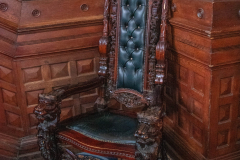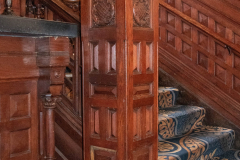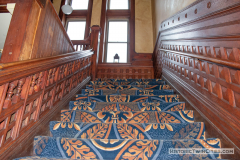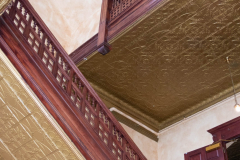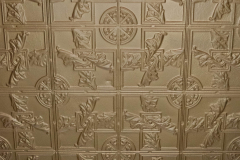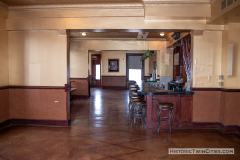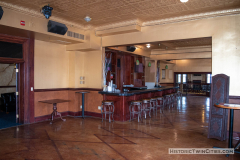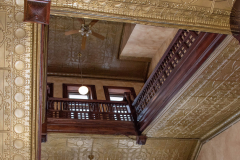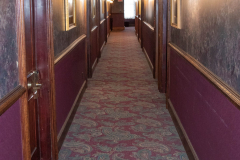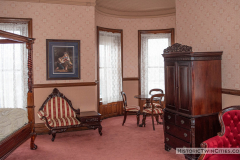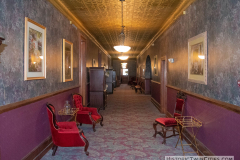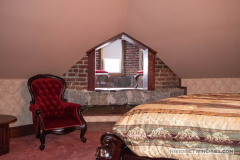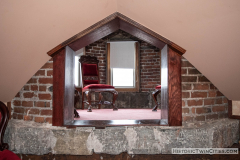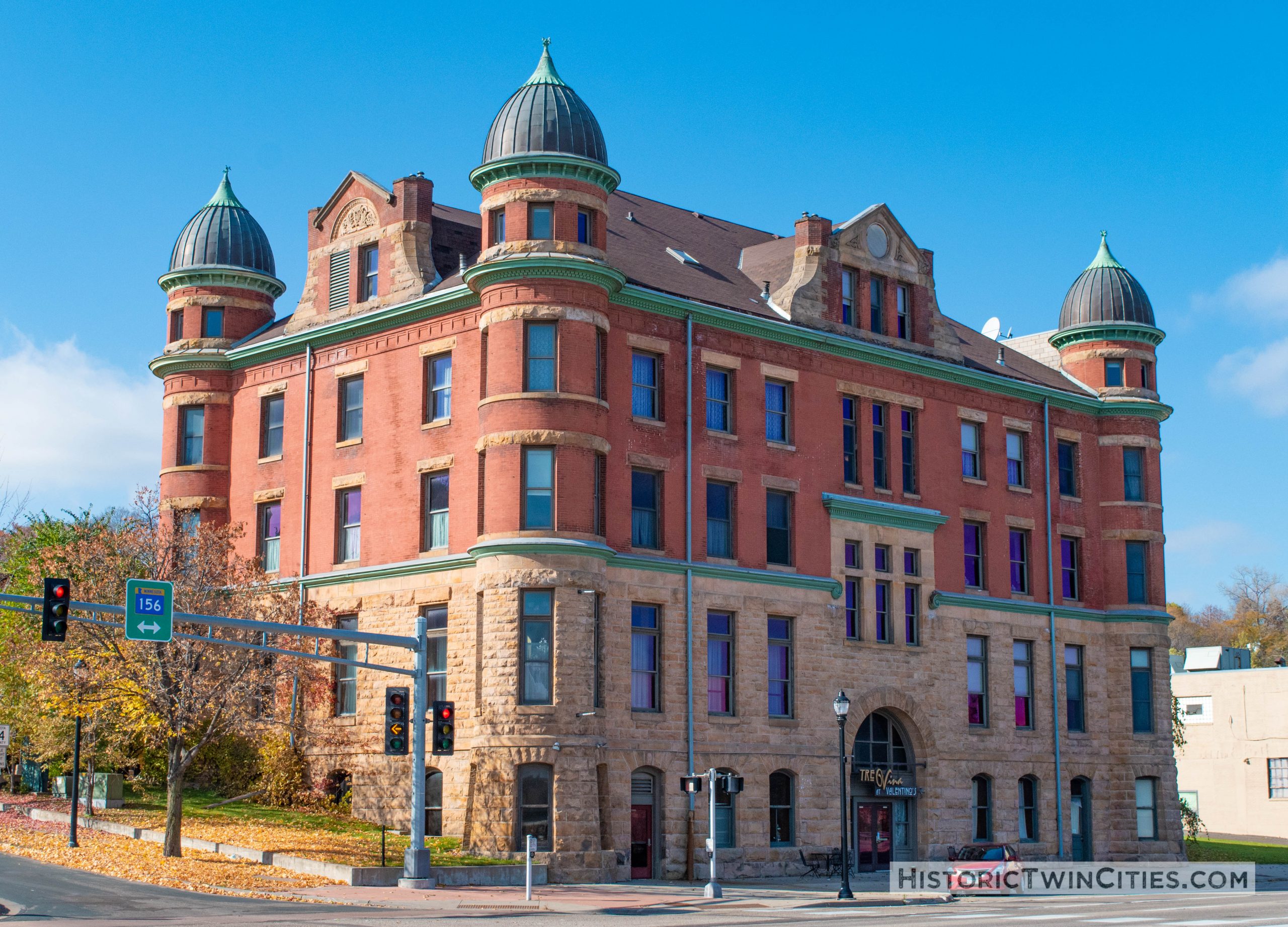
South St. Paul’s rise and fall as the king of the meat packing industry began in 1886 and lasted for over one hundred and twenty years. Today, however, most of what was once one of the largest stockyard operations in the world has been lost to the wrecking ball. As the meat packing operations in the city diminished over the years, many of the buildings that supported the industry vanished. While a few remnants still remain, none is more majestic than the Stockyards Exchange Building, located at the corner of Grand Avenue and Concord Street in South St. Paul. [Go to photo gallery]
Saint Paul Union Stockyards
Around 1885, St. Paul railroad magnate, Alpheus Beede Stickney, purchased land along the west side of the Mississippi River in what was then West St. Paul Township. Stickney’s plan was to use the land as a layover for trainloads of cattle being shipped from the west. Once there, they could be rested, fed and watered before finishing their trip to the meat packing plants in Chicago.
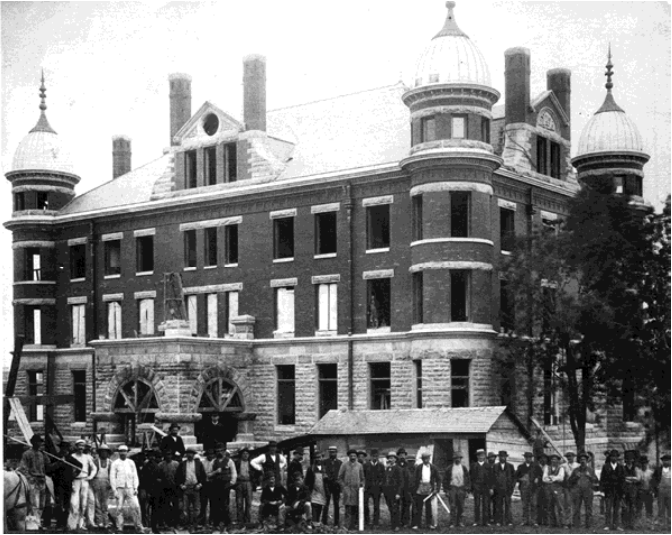
To abate the threat of flooding every spring, Stickney had thousands of tons of earth moved from the bluffs above the river to the flats down below. Overall, an area encompassing 260 acres was raised by four feet. This ultimately stabilized the ground under which Stickney would build his massive operation.
On June 30, 1886, Stickney founded the Sant Paul Union Stockyards company. This event marked the beginning of what would become the economic foundation for the city of South St. Paul for the next one hundred and twenty years.
South St. Paul is Born
In January of 1887, a group of businessmen representing the new livestock industry organized and established a charter for a new city to be called South St. Paul. The area they proposed to incorporate was the entire area of what was then called West St. Paul Township. Since the area in question was actually south of St. Paul, the proposed new name was found to be more fitting. On March 2, 1887, the state legislature approved the charter and the new city of South St. Paul was established.
Seven months later on September 30, 1887, the first shipment of cattle arrived in the South St. Paul stockyards from Montana. Overnight, the livestock were fed and watered and continued on to Chicago the next morning (1).
A Handsome Exchange
That same year, the St. Paul Union Stockyards Exchange Building was completed. Upon its opening, the South St. Paul Reporter noted that “No handsomer live stock Exchange is to be found in the West than this one at South St. Paul.” (2)
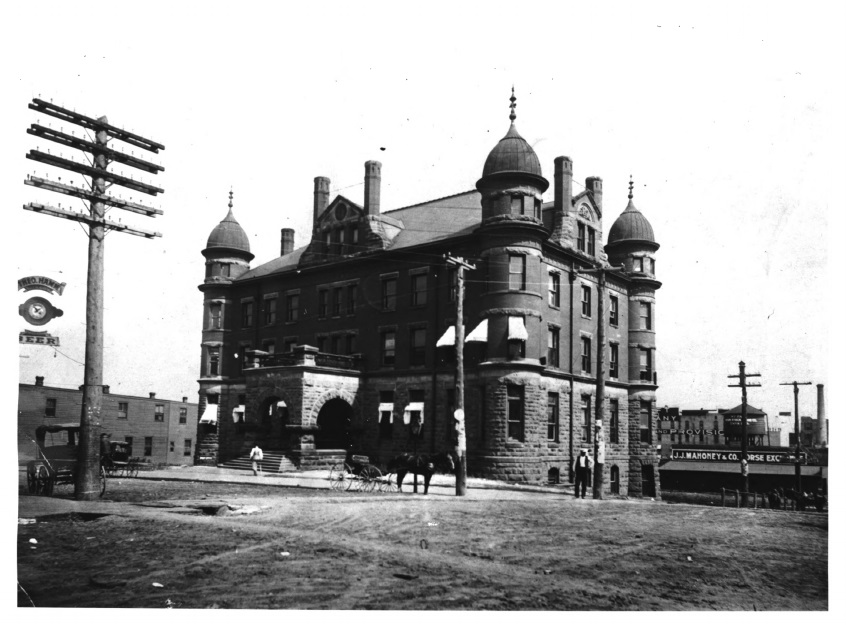
Designed by architect Charles A. Reed, the Stockyards Exchange Building is an example of Richardsonian Romaesque design which was popular in the late 1800s. Reed, a graduate of the Massachusetts Institute of Technology, arrived in St. Paul in 1881 and later partnered with architect Allen H. Stem. Reed and Stem gained national prominence primarily as designers of railroad stations throughout the United States. They partnered with the architecture firm of Warren and Wetmore on the massive Grand Central Terminal in New York City and designed the beautiful Union Station in Tacoma, Washington as well. Locally, a few of Reed and Stem’s more notable designs are Wulling Hall on the University of Minnesota campus, the St. Paul Athletic Club and the Saint Paul Hotel.
The five-story Stockyards Exchange Building is constructed of masonry bearing walls with an interior timber structural system (3). As originally designed, the rectangular-shaped building is adorned with turrets at all four corners of the structure and dormers on all four sides. The first two stories are constructed of light-brown limestone blocks while the upper stories are covered in red brick. The original eight fireplace chimneys (two on either side of each dormer) were removed in 1940.
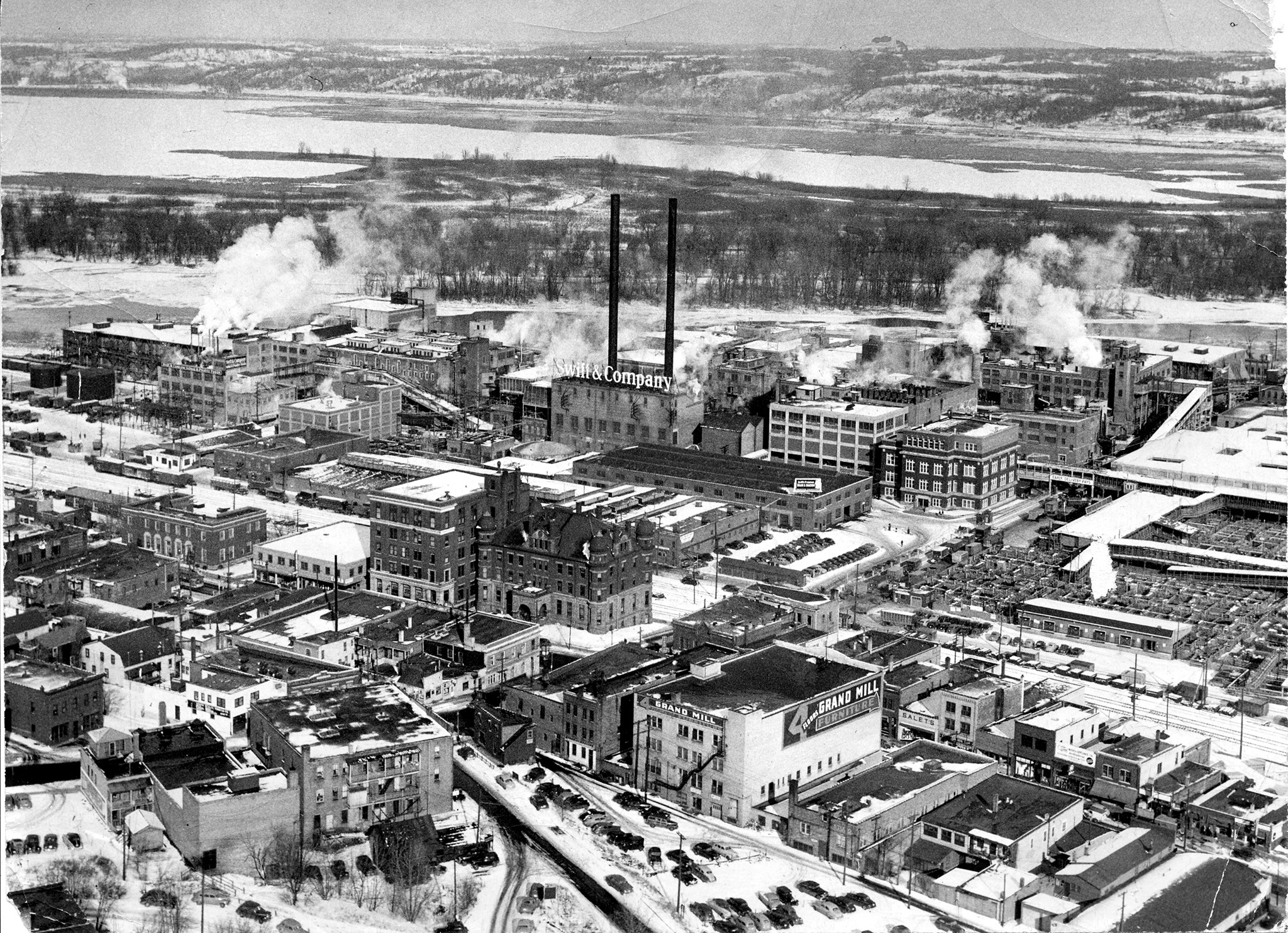
Inside the Exchange Building, the floors were originally covered mostly in hardwood planks, and in some areas tile. Stained oak trim and wainscoting dressed up the painted wet plaster walls and the building’s ceilings were decorated with galvanized iron panels.
Adding On
The Exchange Building housed commission firms and other businesses associated with the stockyards. It was also home to the city’s first bank, the Stockyards National Bank. In 1888, the city’s first post office opened in the lobby of the building and later moved to the basement. The South St. Paul City Council also met in the building before the construction of City Hall in 1890. Rooms on some of the upper floors of the building were also used for meetings by various community groups.
The stockyards operation quickly outgrew the space in the Exchange Building and in 1917, a six-story office building was constructed immediately to the north. This ‘annex‘ was intended to provide additional office space needed for the stockyard operations. It was linked on each of the four floors of the Exchange Building by means of a narrow concourse.
A Witness to History
Over the years, the Exchange Building has been witness to a number historic events in the city. South St. Paul meat packing workers participated in strikes in 1904, 1921, 1922, 1933, 1946 and 1948. The Minnesota National Guard was called out during the 1921 and 1948 national strikes when mass picketing closed the meat packing plants.
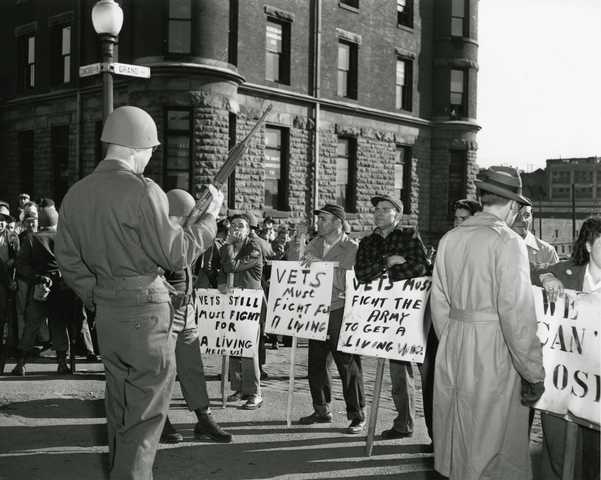
Tensions Rise
The 1948 strike was a particularly violent affair that pitted neighbor against neighbor. Workers across the nation from the big four packing plants, Swift & Co., Armour & Co., Cudahy Packing Company and Wilson & Co. walked out on March 16, 1948 demanding higher wages. The strike was mostly peaceful for the first few weeks. Over time, however, tensions rose and isolated incidents, including assaults on non-striking workers, increased.
These tensions came to a head on May 13th, 1948 when Dakota County Sheriff Norman Dieter, accompanied by four of his deputies and sixteen South St. Paul police officers, clashed with thousands of protesters at the foot of Grand Avenue outside the Exchange Building. The surging crowd, armed with clubs and fists, quickly overwhelmed the law enforcement officers. At one point all of the officers were knocked to the ground and at least one injured policeman was carried from the scene (4).
The following day, Friday, May 14, Governor Luther Youngdahl ordered the Minnesota National Guard be mobilized. On Saturday, May 15, four hundred National Guardsmen cleared a crowd estimated of 1,000 picketers from the streets of downtown South St. Paul. It was the second time in the city’s history that they had done so. The 67-day strike finally ended on May 22 when the union voted to accept a 9-cent wage increase – the same increase they were initially offered.
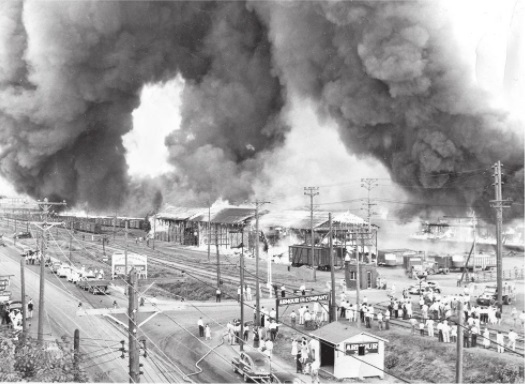
Conflagrations
On May 31, 1948, nine days after the strike ended, a massive fire erupted in the sprawling stockyards complex. It was fueled by tinder-dry sheds, corrals and stock chutes in the yards. The ‘Memorial Day Fire’ was first noticed around 11:45 AM that morning. The column of smoke that arose from the blaze was visible from 15 miles away. The fire required nine pumpers and 206 men over a two-day period to extinguish the fire. In the end it consumed an estimated one-fifth of the total stockyards property as well as 88 railroad cars and 50 head of cattle.
Total losses as a result of the blaze were estimated at more than $2 million at the time. Miraculously, no loss of life occurred. The cause of the fire was never determined. It was speculated, however, that disgruntled workers had ignited the blaze in retaliation for the strike.
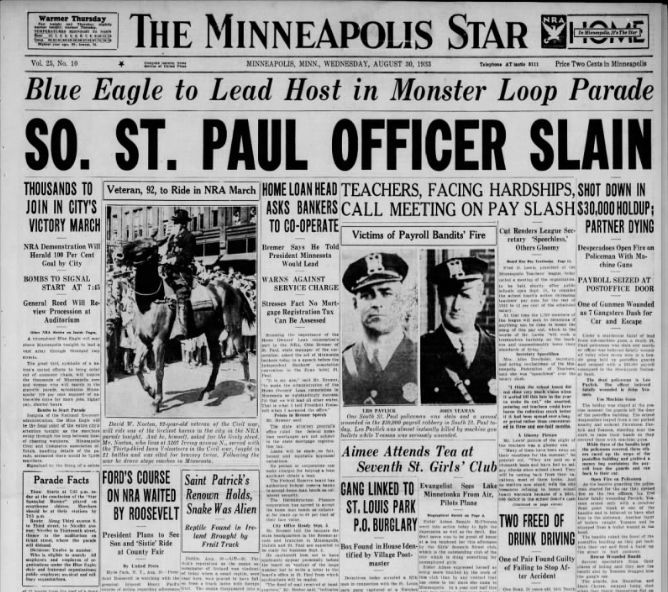
Stickups
Gangsters also left their mark on the city. On August 30, 1933, outside the South St. Paul Post Office, just steps from the Exchange Building, one officer was shot dead and another severely injured when the Barker-Karpis Gang robbed two bank messengers, escaping with $33,000 in payroll intended for employees of Swift and Company.
During the robbery, Officer John Yeaman was struck multiple times by machine gun fire, including one bullet to his face. Miraculously, he survived his injuries. Officer Leo Pavlak, who had served only four months on the South St. Paul Police Department at the time of the holdup, was killed.
In addition to Fred Barker, other members of the the Barker-Karpis Gang reported to have been involved in the South St. Paul Post Office robbery were, Alvin “Creepy” Karpis, Charlie Fitzgerald, Bryan Bolton and Fred Goetz. No one was ever prosecuted or convicted for the South St. Paul robbery and shootings.
The Winds of Change
Beginning in the 1960s, the stockyard operations in South St. Paul began to decline. As a result of this downswing, Swift and Company closed its facility in 1969, eliminating 2,400 jobs in the city. Ten years later in 1979, Armour and Company closed what was, at one time, one the largest and most state-of-the-art meat packing facilities in the country. Approximately 4,000 jobs were lost with the closing of the Armour plant.
Prior to the two major packing plants closing their doors, the city already saw the need for revitalization in an effort to both modernize its infrastructure and to compete with neighboring cities retail areas. Subsequently, in 1963, a group of local civic leaders, business owners and elected officials formed the Community Redevelopment Committee to establish a plan for future growth. In 1964 the city formed the South St. Paul Housing and Redevelopment Authority. Together, these two organizations developed a plan for urban renewal along the Concord Street corridor in South St. Paul that would ultimately make the area surrounding the Stockyards Exchange Building almost unrecognizable.
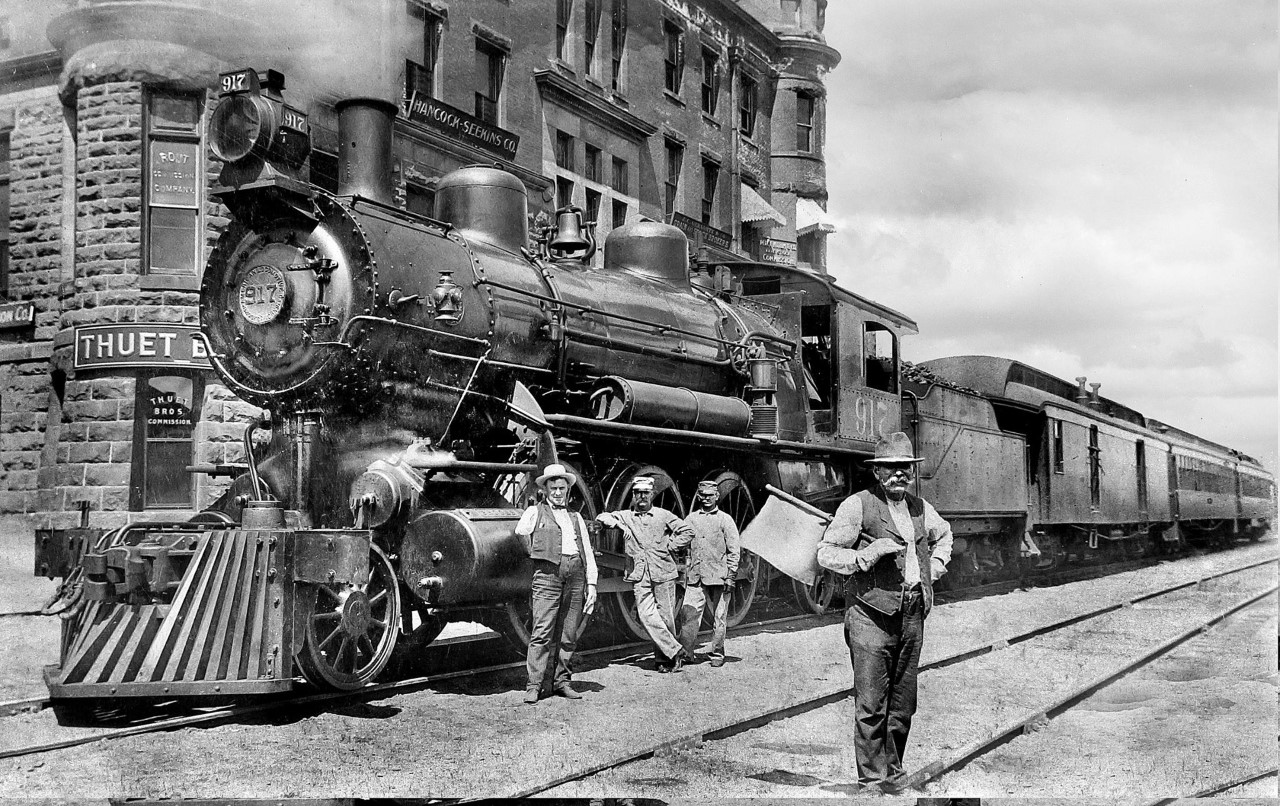
Urban Renewal
When the Stockyards Exchange Building was constructed in 1887, it was located adjacent to railroad tracks that ran north-south along what is today Concord Avenue on the building’s east side. Concord Street itself was originally located on the building’s west side and was lined with building after building for blocks and blocks. As part of the city’s urban renewal effort, 136 buildings were torn down along old Concord Street, Grand Avenue, Pitt Street (now Veteran’s Memorial Drive) and other adjacent streets in the area. During this purging of old buildings in the area, a number of historical landmarks were spared, including the Stockyards Exchange and the South St. Paul Post Office just down the street.
In addition to razing many of the area’s old buildings in the early 1970s, millions of dollars were spent removing the railroad tracks that lay just to the east of the Exchange Building. New track was laid further east of the building on the banks of the Mississippi River. In their place, a new four-lane highway was constructed. This new thoroughfare, named Concord Street, was intended to bring more traffic into the city and ultimately stimulate retail in the area. The original Concord Street on the west side of the Exchange Building was renamed Concord Exchange.
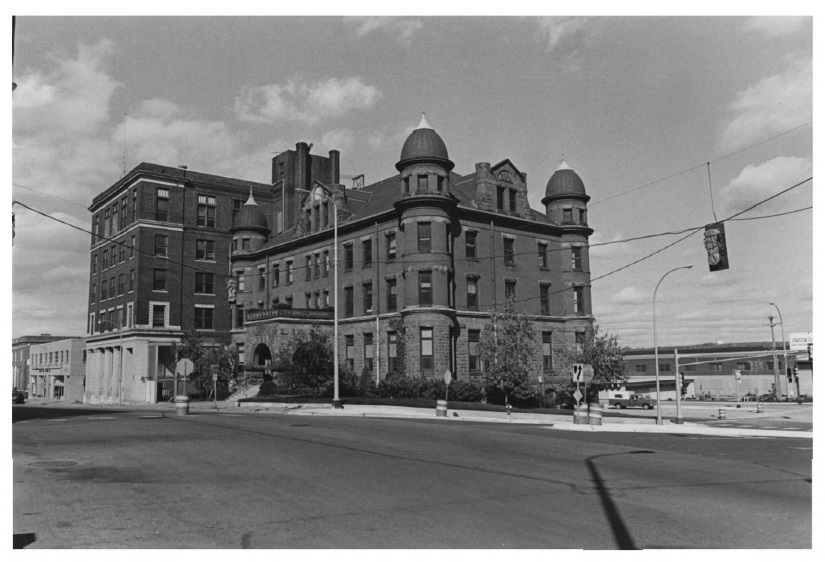
Uncertain Times
Operations continued in the Stockyards Exchange Building until the mid-1970s. In 1976, the South St. Paul City Council gave the city’s Housing and Redevelopment Authority (HRA) approval to purchase the building, against the wishes of some members of the city council. Some feared the building had outlived it usefulness and would become a money pit. Many ideas were considered about what to do with the historic building. One option proposed was to restore and repurpose it as an “interpretive center” that told the story of the stockyards and associated immigration into the city.
In 1977, the Stockyards Exchange Company moved out of the building and relocated to a new, more modern location on land once occupied by Swift and Company. In March 1979, the Exchange Building was placed on the National Register of Historic Places. The following October, Colonial Properties purchased the Exchange Building for $10,000. They agreed to spend $1.2 million to renovate the building, converting it into private office space and a restaurant. The South St. Paul City Council subsequently approved Colonial’s plan. However, prior to closing on the deal to renovate the building, developer Morris Kloster purchased the structure from Colonial Properties.
In January 1980, vandals broke into the building and turned on the sprinkler system, flooding the interior. The water ran for several days and caused extensive damage to the building before it was discovered. Many of the historic building’s galvanized iron ceiling panels were destroyed and its electrical and mechanical systems were a total loss. Damage to the building was estimated at $100,000.
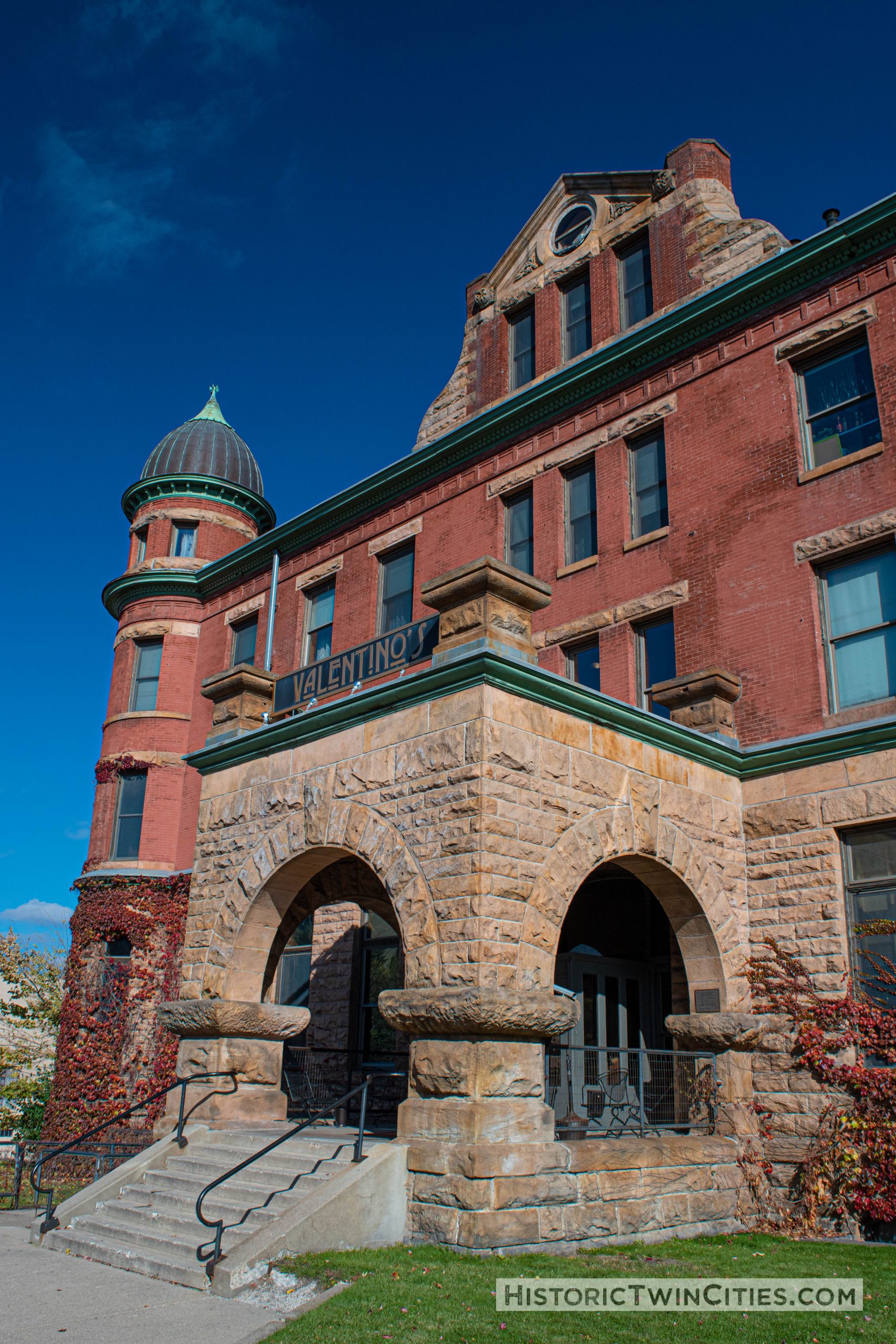
Ultimately, the building sat vacant for the next 18 years. In 1985, the HRA constructed a two-level parking ramp across Concord Exchange in an effort to attract prospective new developers. In 1986, the city HRA notified Kloster that he was in breach of contract by failing to complete renovations on the building as scheduled. In January 1991, Kloster passed away; the following July, the South St. Paul HRA received the Exchange Building back from the Kloster estate.
Designing the Future
In the Spring of 1992, the HRA spent thousands of dollars repairing damage to the Exchange Building caused by both nature and vandals. Repairs were made to the structure’s damaged roof and toxic asbestos, as well as an underground storage tank were removed. Thousands of dead pigeons and rodents that had infested the building over the years were cleaned up as well.
In 1994, the HRA received permission to tear down the 1917 ‘annex’ located on the Exchange’s north side. At the time, this addition had been known then as the Stockyards National Bank Building. The addition had undergone extensive renovations in the 1950s and 1970s and retained little historic significance. The HRA felt that removing the 1917 addition would make the Exchange Building more attractive to potential developers.
After years of unsuccessful marketing by the South St. Paul HRA, developers Duane and Martha Hubbs purchased the Stockyards Exchange Building in July of 1997. The Hubbs had established a reputation for turning historic buildings in Stillwater into highly successful hospitality ventures. Over the next year, the Hubbs invested over $3 million in renovating the building. In the Fall of 1998 they opened the old Exchange Building as the grand 30-room Castle Hotel. Unfortunately, a little more than a year later, the Castle Hotel declared bankruptcy.
In October 2001, businessman Richard DeFoe purchased the building and shortly after opened Valentino’s nightclub and catering center on the main floor and TreVina restaurant in the lower level. Today, however, Valentino’s and TreVina are no longer open. DeFoe still owns the property and operates the Historic Concord Exchange in the building as a wedding and special event center. The event venue offers a unique multi-level ball room, martini lounge, and 14 hotel rooms.
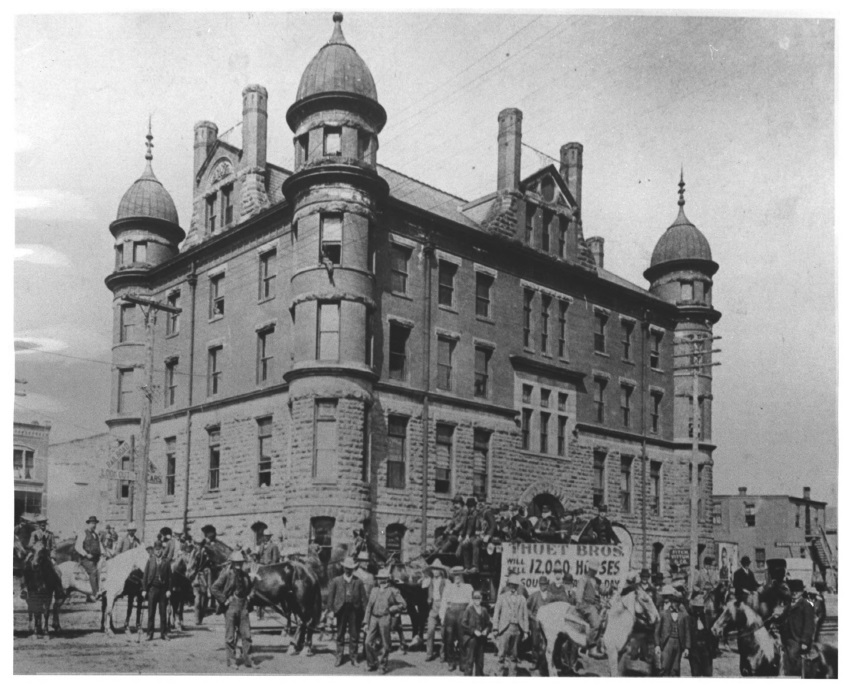
A Monument to the Past
While the area today surrounding the historic Stockyards Exchange Building looks nothing like it did during the heydays of South St. Paul’s stockyard operation, the structure itself has changed little. The exterior of this beautiful Richardsonian Romaesque palace remains virtually untouched, aside from the missing fireplace chimneys and the addition of an elevator shaft at the structure’s north end. Upon entering the Exchange, visitors will still be impressed with the original oak woodwork, the ornate galvanized iron ceilings and the elegant staircase that rises from the main floor.
Sadly, the Exchange Building is one of only three historic structures preserved in the city of South St. Paul and listed on the National Register of Historic Places. Regardless, it has survived the rise and fall of what had been one of the largest stockyard operations in the world. And it will continue to stand for many more years as a monument to the men and women who made the South St. Paul Stockyards legendary.
If You Visit…
The historic Stockyards Exchange Building is located at 200 Concord Exchange North in South St. Paul. It hosts private events as the Historic Concord Exchange.
Photo Gallery
Special Thanks to..
Alex DeFoe, Historic Concord Exchange
References:
- Glewwe, Lois, A Final Farewell, South St. Paul Voice, April 2008 (1)
- South St. Paul Reporter (1887) via “Stockyard Exchange Building”, Dakota County Historical Society (2)
- National Register of Historic Places Inventory – Nomination Form – Stockyards Exchange Building, March 7, 1979 (3)
- Lanoue, William, 1948 Meatpackers Strike (4)
- Glewwe, Lois A., South St. Paul: A Brief History, Copyright 2015, The History Press (5)
- “Fire Sweeping Stockyards at South St. Paul”, The Minneapolis Star, Monday, May 31, 1948
- Glewwe, Lois A., City Within a City: The Stockyards of South St. Paul, South St. Paul Voice, March 2005
- Jossi, Frank, “Former exchange revived as hotel”, St. Paul/Minneapolis Business Journal, November 1, 1998
- South St. Paul Centennial 1887-1987, South St. Paul Area Chamber of Commerce Chapter of the Dakota County Historical Society, Copyright 1987
